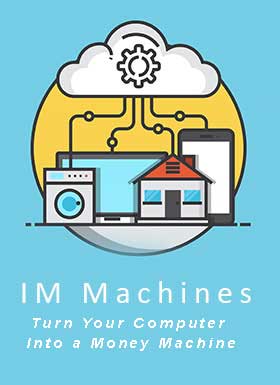Introduction: The Power of Possibility
Elon Musk’s insight reminds us that transformation begins with a mindset:
The first step is to establish that something is possible; then – probability will occur
For online creators, coaches, and solopreneurs, this idea is the spark that shifts you from dreaming to doing. When you affirm that something is possible, you clear mental clutter, align your beliefs, and prime yourself for action. Only then can you shape real-world probability and results.
1. Why Declaring Possibility Matters
-
Mental Clarity & Focus
In the vast noise of ideas, declaring something possible gives your mind direction. Instead of scattered energy, you channel your efforts toward one specific outcome: launching a course, tripling email subscribers, or building a new funnel. -
Shift from Scarcity to Growth Mindset
Believing something is possible positions you in a growth mindset. You’re not restrained by doubt or limiting beliefs—this opens you to opportunities, creative solutions, and resilience. -
Inspiring Action
Possibility is a magnet. It attracts motivation, collaborators, and momentum. It convinces you—and others—that the goal is achievable, making planning and resource-gathering easier.
2. Steps to Declare Possibility in Your Online Business
-
Define Your ‘Possible’
Identify what “possible” looks like in your context. Is it reaching £5k/month in digital product revenue? Launching a six-figure online course within 12 months? Get specific. -
Visualize the Outcome
Spend 5 minutes daily visualizing the result: imagine your enrollment page filling up, excited launch emails, and social proof rolling in. This creates neural alignment with your goal. -
Find Proof in Similar Contexts
Seek out creators who’ve done what you want. Case studies, peer wins, and benchmarks challenge internal doubt by showing: if they did it, so can you.
3. Building Probability: From Possible to Probable
Once you’ve declared “it’s possible,” the next challenge is influencing probability: making success likely, not just conceivable.
a. Design a Repeatable System
Example: Launching a digital course
-
Possible: You can launch a course.
-
Probable: You set up a system: audience research → content outline → beta launch → marketing.
By breaking the goal into repeatable phases, you create a blueprint that improves odds each time.
b. Test, Iterate, and Optimize
Probability grows with data. Don’t wait for full perfection:
-
Test small: pilot your offer with 10–20 people.
-
Gather feedback: refine modules, messaging, delivery.
-
Scale methodically: adjust funnels, ads, operations based on real-world wins/challenges.
c. Use Metrics to Guide Decisions
Track leading indicators—email list growth, webinar sign-ups, beta feedback quality. These early signs reveal probability trends more than vanity metrics like page views.
4. Real-World Example: From Idea to Launch
Let’s follow a creator named Maya:
-
Establish Possibility
Maya decides it is possible to teach digital watercolor via an online course. She finds peers with profitable art classes, which reinforces belief. -
Define & Visualize
She sets a goal: 100 students in six months. She visualizes course modules, student reviews, and community interaction. -
Build the System
Phase 1: Host free workshops to see interest and gather emails.
Phase 2: Beta-launch with 20 students to test content.
Phase 3: Full launch with improved messaging and funnel. -
Measure & Iterate
Maya tracks conversion rates, open rates, and engagement. She tweaks her modules and emails based on feedback. -
Scale Probability
Results: 120 students enrolled, a 90% completion rate, and testimonials to fuel future launches. Her belief in the process—and probability—strengthens.
5. Overcoming Common Barriers
-
“I’m Not Qualified Enough.”
Remember: expertise grows while teaching. Possibility isn’t perfection. Start where you are—your lived experience counts. -
“The Market Is Too Saturated.”
Many niches appear crowded, but there’s specific demand. Validate your distinct angle, not the whole market. -
“I’ll Wait Until I’m Ready.”
A low barrier-to-entry MVP can validate quickly. Waiting for perfect readiness often kills momentum. Possibility kicks you off the sidelines.
6. Connecting Possibility to Probability in Your Routine
Turn possibility into habitual action:
-
Journal Prompts
-
What feels possible in your business right now—and why?
-
What’s the smallest next step that increases probability?
-
-
Weekly Planning
-
Choose one mid-level goal that’s possible—then plan the first step toward making it likely.
-
-
Monthly Review
-
Assess what worked, what failed, and how systems improved your odds. Celebrate small wins in probability.
-
7. Why Elon Musk’s Insight Matters for Creators
Musk’s successes—from PayPal to SpaceX—aren’t only about big thinking, but establishing feasibility before scaling. For the online creator, the stakes may be smaller—but the principle holds:
-
Say it aloud: “It is possible I earn six-figures from my digital guide.”
-
Frame actions accordingly: what system, test, or micro-offer makes that probable?
This mindset approach—possibility → probability—is a sustainable engine for growth, not just wishful thinking.
8. Your Call to Action
-
Today’s Step: Write down one business goal and a simple system that turns it from possible to probable.
-
Tomorrow’s: Take the first micro-action—send that email, host a free session, or create a mini-module draft.
Conclusion
Elon Musk’s quote is more than motivational fluff—it’s a roadmap. For creators and solopreneurs:
-
Step 1: Declare what’s possible. Let that belief fuel creativity.
-
Step 2: Build probability with repeatable systems, testing, metrics, and iteration.
That’s how ideas leap off the page and manifest as real-world results—one actionable step at a time.
Bonus: Journal Prompt for You
“What is one goal that feels both exciting and possible—and what is the smallest action you can take this week to make it probable?”
Explore this in your journal to reveal clarity and drive your next move.






